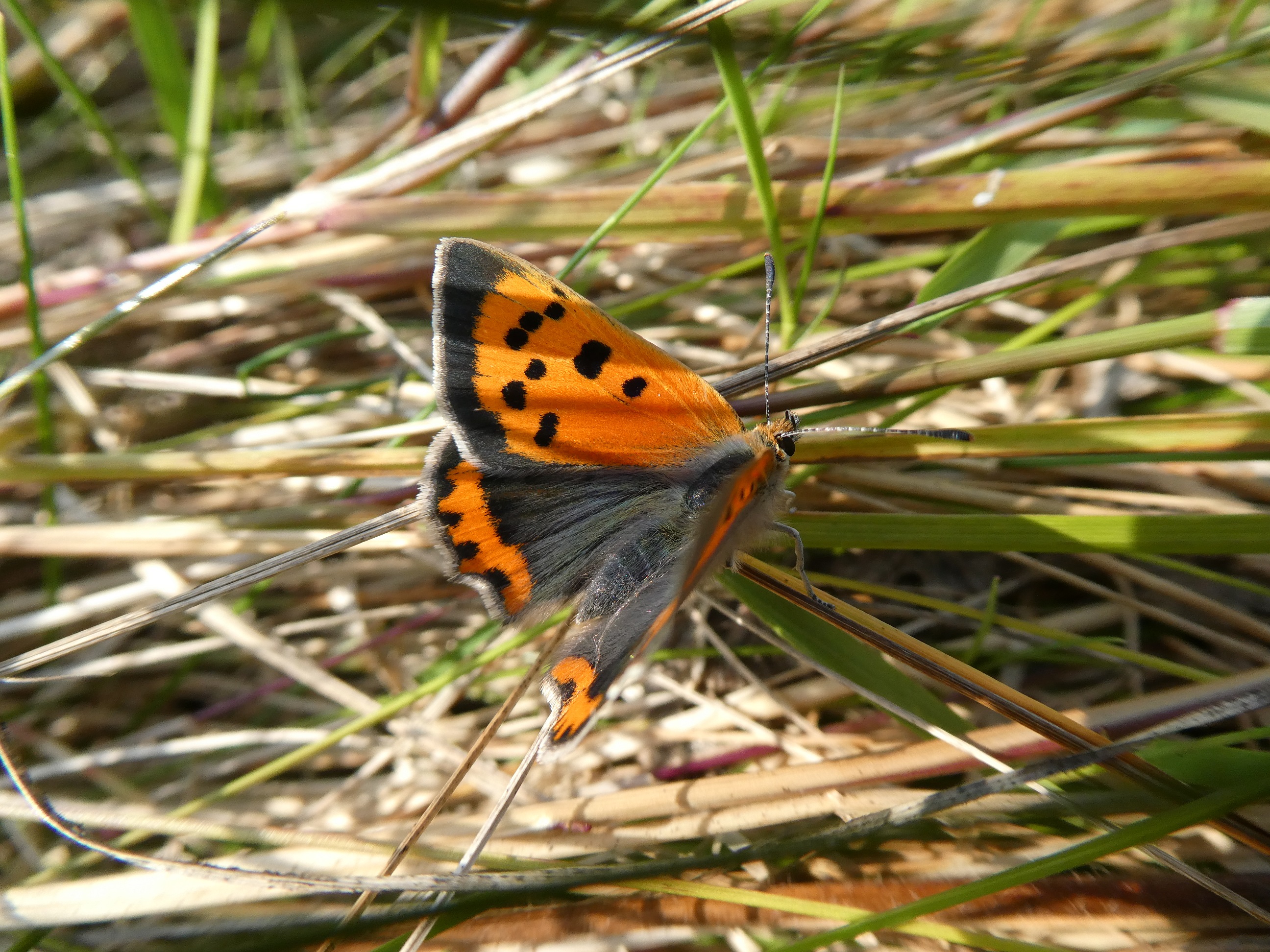A study published in 2018 (cited as Kurze, S., Heinken, T. & Fartmann, T. Oecologia (2018) 188: 1227. https://doi.org/10.1007/s00442-018-4266-4) has found that nitrogen enrichment in caterpillar host plants increases the mortality of common Lepidoptera species.
The study involved testing the response of larvae of five common butterfly and moth species to host-plant fertilization using fertilizer quantities usually applied in agriculture. The species involved are Small Heath, Speckled Wood, Small Copper, Sooty Copper (not found in Ireland or Britain) and two moths, Straw Dot and Blood Vein.
Nitrogen fertiliser was applied to two host plant species, Annual Meadow Grass used by Small Heath, Speckled Wood and Straw Dot and Sheep’s Sorrell used by the Small Copper, Sooty Copper and Blood Vein.
Nitrogen fertiliser kills caterpillars
The researchers found that the addition of nitrogen decreased the survival of all six species by at least one-third. Richard Fox of Butterfly Conservation UK commented that increases in larval mortality range from 33%-80%. This study presents the first evidence that current fertilization quantities in agriculture exceed the physiological tolerance of common Lepidoptera species. The results suggest that (1) the negative effect of plant fertilization on Lepidoptera has previously been underestimated and (2) that it contributes to the range-wide decline of Lepidoptera.
There are further issues that arise from the study. The situation may be considerably worse than the study found. Applying 90 kg of nitrogen per hectare per year as was done for the study would be likely to remove Sheep’s Sorrel and Annual Meadow Grass from agricultural grassland altogether. The reason for this is that these caterpillar host plants will be out-competed by coarser, aggressive plants that respond to increased nitrogen by growing at a fast rate. Even if this is not the case the increased fertility produces a greener, lusher sward where temperatures are lower, delaying or even preventing larval development. In addition, nectar resources for adults are usually lower than required as grasses out-compete nectar-rich flora.
Furthermore, while application rates of nitrogen on grazing land in Ireland varies, 120 kg of nitrogen per hectare is often applied. It is highly unlikely that the Small Heath or Small Copper can survive on these grasslands. Teagasc, the state agency providing research, advisory and education in agriculture, horticulture, food and rural development in Ireland advises farmers on nitrogen application rates. For dairy grazing, these can rise to 210 kg of nitrogen per hectare per year.
Under such an application regime it is no surprise that butterfly and moth species are being eliminated from the landscape, or why such formerly widespread and abundant species like the Small Heath and Wall Brown are now in serious trouble.
Research needed to save farmland butterflies
Research should be carried out to determine the rate of nitrogen application that grassland Lepidoptera species can tolerate. The Sooty Copper was able to cope with 30 kg of nitrogen but the other species studied were not assessed for nitrogen tolerance. A study of biodiversity richness under the full range of nitrogen inputs it advises (including nitrogen added by slurry applications) should also be undertaken by Teagasc. Nitrogen application should be reduced or prohibited on farmland adjoining land designated as Special Areas of Conservation and National Heritage Areas to ensure these areas are not contaminated.
This issue can be addressed. Forcing land to produce more food by pouring chemicals into the soil cannot continue at the expense of biodiversity, water quality and possibly animal and human health and our world in general. Butterfly Conservation Ireland will take up the issue with Teagasc and urge the organisation to undertake the research needed to assess the impacts of nitrogen application on biodiversity on Irish farmland and alleviation and amelioration strategies. Good farming and good wildlife conservation must be the outcome if wildlife is to survive in today’s farmed landscape.


